#First Presbyterian Church of Springfield
Explore tagged Tumblr posts
Text





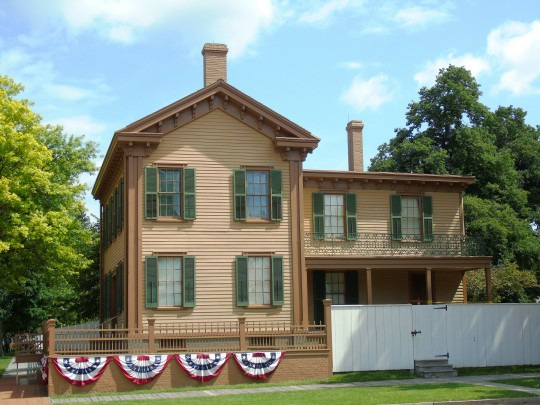


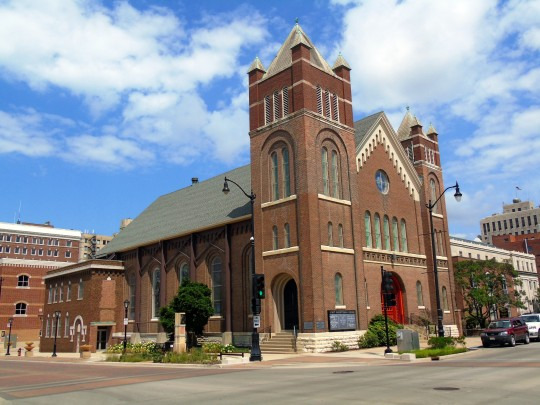



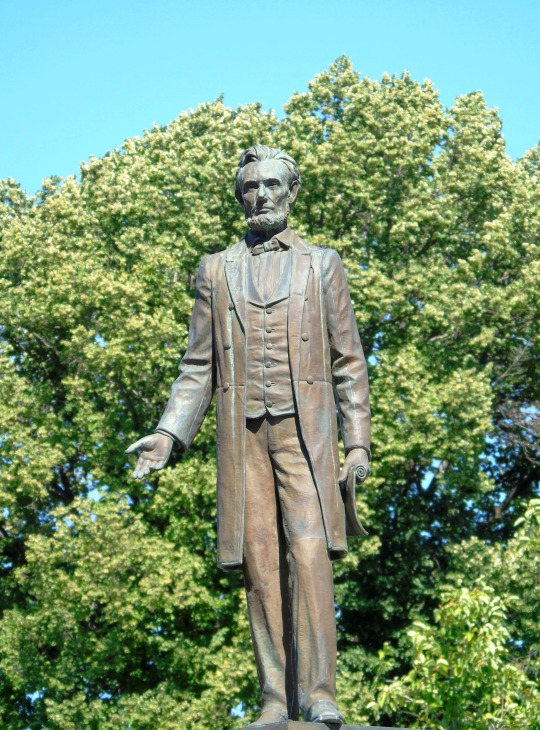
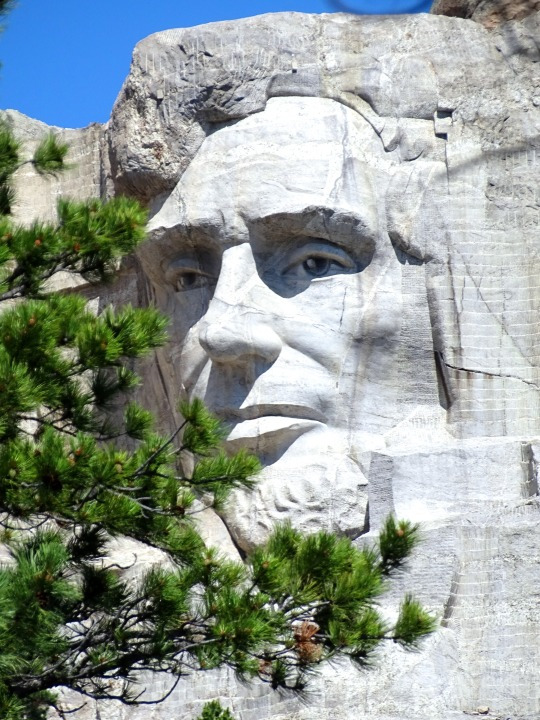




Lincoln's Birthday
Abraham Lincoln, the 16th President of the United States, was born on February 12, 1809. Over the years, he has become known as one of the greatest American presidents of all time. At the time of his death, in 1865, many saw him as a martyr, and it wasn't too long afterward that his birthday began being observed informally. In the mid-1870s, Julius Francis of Buffalo, New York, began honoring Lincoln on his birthday and petitioned Congress to make the day a legal holiday.
But, as of 2019, Lincoln's Birthday is not, nor has it ever been, its own federal holiday. On the state level, a handful of states celebrate Lincoln's birthday on its actual date. In recent years, it has been celebrated as a state holiday in Ohio, Missouri, New York, Illinois, and Connecticut. It is celebrated as such in California as well, but since 2009, it has no longer been a paid holiday there. Some states, Indiana being one example, have officially celebrated Lincoln's birthday, but not on the actual date of his birth. In prior years, more states officially celebrated his birthday; twenty-four states celebrated it in 1940, and ten celebrated it in 1990.
Although Lincoln's Birthday is not celebrated on its own on the federal level, it is often implicitly or explicitly celebrated as part of Washington's Birthday, which is usually called Presidents' Day, taking place on the third Monday in February. In some states, this holiday is known as Washington and Lincoln Day. However, there are other variations of the day; some states specifically celebrate only Washington, and some celebrate Washington and another president, such as Thomas Jefferson.
Besides state observances and informal federal observances, Lincoln's Birthday is celebrated at many places associated with him. Each year, there is a wreath-laying ceremony at the Abraham Lincoln Birthplace National Historical Park in Kentucky. Since its dedication in the early 1920s, there has also been a wreath-laying ceremony at the Lincoln Memorial, which is organized by the Lincoln Birthday National Commemorative Committee and the Military Order of the Loyal Legion of the United States. The reading of the Gettysburg Address is also a part of this event. For his bicentennial, on February 12, 2009, the Abraham Lincoln Bicentennial Commission organized a special event at the Lincoln Memorial. That same day, four new Lincoln pennies were released, with backs that depicted different stages of Lincoln's life. Each year on the day, events are also held at the Abraham Lincoln Presidential Library and Museum in Illinois. The Republican Party holds Lincoln Day dinners around the date because Lincoln was the first Republican president.
Abraham Lincoln was born in a one-room log cabin just south of present-day Hodgenville, Kentucky. When he was two, his family moved to Knob Creek Farm, which is northeast of Hodgenville. In 1816, he moved with his family to Indiana. He did not get much schooling while growing up and often had to work to help support his family, doing things such as farming and splitting rails for fences.
In 1830, his family moved to Macon County, Illinois. He got a job on a boat, hauling freight down the Mississippi River to New Orleans. He then settled in West Salem, Illinois, where he worked as a shopkeeper in a store as well as a postmaster. In 1832, he was a captain in the Black Hawk War and ran for a spot in the Illinois state legislature, which he lost. However, he ran again in 1834 and was successful. As a member of the Whig Party, he was influenced by other Whigs such as Henry Clay and Daniel Webster. Some policy positions he held at the time were in opposition to slavery's spread to the territories, and a goal of expanding the United States with a focus on commerce and cities.
Lincoln decided to teach himself law and passed the bar in 1836. Shortly thereafter, he moved to Springfield, a few years before it became the state's capital. He married Mary Todd in 1842; they had four sons together, although only one would live into adulthood. Lincoln was elected to the U.S. House of Representatives in 1846, but pledging to serve only one term, he returned to Springfield in 1849. His opposition to the Mexican-American War is the most remembered element of his term.
Politics were in Lincoln's blood, and he decided to return to them in 1854. That year, Democrat Stephen Douglas had helped get the Kansas-Nebraska Act passed, which said there should be popular sovereignty when it came to slavery in the territories, meaning that voters should be able to decide for themselves if slavery should be allowed in them. On October 16, 1854, in Peoria, Illinois, Lincoln debated Douglas about the act. During the debate, he spoke against slavery and said it was incongruous with the Declaration of Independence. That same year, he joined the recently formed Republican Party, a party that was created in large part on the belief that slavery should not expand into the territories.
In 1858, Lincoln ran against Stephen Douglas for a U.S. Senate seat in Illinois. In June, he gave his house divided speech, which said the country couldn't go on existing half slave and half free. Lincoln lost the race but gained national recognition, in part because of the debates he had with Douglas.
The Republicans nominated Lincoln as their candidate for president in the 1860 election. It was a four-way race: Stephen Douglas was the nominee of northern Democrats, John C. Breckenridge was the nominee of southern Democrats, and John Bell was the nominee of the Constitutional Union Party. Breckenridge and Bell split the southern votes, and Lincoln won most of the north. He won the electoral vote count, and thus the presidency. By the time he had taken the oath of office in March 1861, seven states had already seceded from the Union; the Civil War began the following month.
The Civil War engulfed Lincoln's presidency, but he proved to be an adept war leader. After George McClellan failed to pursue the Confederate Army after the Union victory at Antietam in September 1862, Lincoln removed him of his position of Commanding General. Lincoln also issued the Emancipation Proclamation after Antietam, which went into effect on January 1, 1863, freeing slaves in the southern states (slaves in the border states loyal to the Union were not freed). The emancipation laid the groundwork for slaves to be freed everywhere—the Thirteenth Amendment went into effect in 1865, after Lincoln's death.
In November 1863, Lincoln delivered the Gettysburg Address at a dedication of the national cemetery at Gettysburg. It became one of the most famous speeches in American history. Although Lincoln has been lauded for fulfilling the commander-in-chief role, he did so not completely without controversy, as he suspended habeas corpus.
In 1864, Lincoln faced the general he had relieved, George McClellan, in his bid for reelection. He prevailed, and at his second inaugural he spoke of the end of the war, and the need for a conciliatory reconstruction "with malice toward none; with charity for all." On April 9, 1865, Confederate commander Robert E. Lee surrendered to Union Commanding General Ulysses S. Grant at Appomattox Court House. Two days later, Lincoln gave a speech on the White House lawn.
On April 14, which happened to be Good Friday, President Lincoln was shot in the back of the head by John Wilkes Booth while at Ford's Theatre. He died early the next morning at a boarding house across from the theatre. Today we remember his remarkable life and his contributions to the United States at such a difficult time in its history.
How to Observe Lincoln's Birthday
The following are some ways to celebrate Lincoln's Birthday:
Visit the Abraham Lincoln Birthplace National Historical Park. This encompasses both his birthplace south of Hodgenville, as well as Knob Creek Farm, where he lived next. A wreath-laying ceremony takes place at the park.
Stop at the Lincoln Museum in downtown Hodgenville as well as the nearby Abraham Lincoln Statue.
Stop at other places along the Kentucky Lincoln Heritage Trail.
Attend the wreath-laying ceremony at the Lincoln Memorial.
Visit the Abraham Lincoln Presidential Library and Museum and The Lincoln Tomb in Springfield, Illinois.
Stop at the Lincoln Boyhood National Memorial in Indiana or at the Abraham Lincoln Library and Museum in Tennessee.
Go to Ford's Theatre.
Read a book about Lincoln.
Read some of Lincoln's own writings and speeches.
Source
#Lincoln's Birthday#Abraham Lincoln#born#12 February 1809#anniversary#Lincoln Memorial#Henry Hering#Lincoln Home#Lincoln Home National Historic Site#Seated Lincoln#Augustus Saint Gaudens#First Presbyterian Church of Springfield#Lincoln Family Church#statue#art#Washington DC.#Springfield#Indianapolis#Chicago#USA#photography#history#travel#original photography#vacation#tourist attraction#landmark#cityscape#architecture#US history
0 notes
Text
AOTI: Chapter 1
So, I'll say up front that this might be my favorite of the Anne books. I have not read it in years, though. My copy is very yellowed and fragile to the point I am afraid to open it all the way.
First of all:
What is with all the purple prose? Have I turned into Mr Carpenter in my old age? "The empurpling dye of sunset" Is "empurpling" even a word? When I tried to find a good Jebediah Springfield gif to put here, I found an essay on the idea of "fauxcabulary." But, LMM got her point across, so I give her props for that.
Then I had to look up "George Whitefield," who, according to Wikipedia, was a founder of Methodism. Is LMM making a joke here? And yet, he was buried on the grounds of a Presbyterian church. It makes me wonder which of these pictures it was:
Option 1
or
Option 2
Somehow at some point, I underlined the last sentence of the chapter in turquoise ink: "And she was richer in those dreams than in realities; for things seen pass away, but the things that are unseen are eternal." I'm not sure when this was done- but I know I had a very rich imaginary world that I would escape to when the bullying got too bad to drown things out. I expect that's probably what I meant there.
15 notes
·
View notes
Text
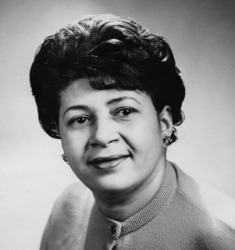
Georgia Montgomery Davis Powers (October 19, 1923 - January 30, 2016) was a politician and activist, and in 1967 she became the first African American to be elected to the senate of the state of Kentucky. She was a close friend of Dr. Martin Luther King Jr. and worked with Rev. Jesse Jackson and baseball great Jackie Robinson in the fight against racial discrimination and injustice in the US.
She was born in Springfield, Kentucky. The only daughter of Ben Montgomery, an enameller for the American Radiator & Standard Sanitary Company, and Francis Walker’s nine children.
She would quit her job at a five-and-dime store rather than tell her African American customers that they weren’t allowed to eat at its food counter. She attended Louisville Municipal College for two years.
She moved around, living in California and New York, and held numerous jobs, including building cargo planes during WWII. She married three times during her life, adopting one child, with her first husband Norman Davis in Louisville. She became involved with the New Covenant Presbyterian Church, and it was through the church she first worked with the Kentucky Democratic Party.
She joined the 1962 senatorial campaign staff of Louisville Mayor Wilson Wyatt. She would support another campaign, the successful bid by Edward T. Breathitt to become governor of Kentucky. She left the campaign organization to join the Civil Rights Movement and became one of the lead coordinators for Kentucky’s March on Frankfort. The March, which brought ten thousand protesters to the state capital on March 5, 1964, demanding an end to discrimination against African Americans in public spaces, was the first of her major political accomplishments.
Among her work toward racial equality was her introduction of a bill to remove race from driver’s licenses, and her support of legislature for open housing. She founded the Friends of Nursing Home Residents, which seeks to organize volunteers in the Louisville area to visit local nursing homes, and the organization, Quality Education for All Students, to monitor efforts to prevent the re-segregation of local schools. #africanhistory365 #africanexcellence #sigmagammarho
0 notes
Text
[ad_1] Vous Church, a celeb hotspot led by the pastor who officiated Kanye West and Kim Kardashian's 2014 marriage ceremony, expanded to Miami Gardens. You got the 100,000-square-foot sanctuary at 17801 Northwest Second Avenue for $12 million from Trinity Church, in line with data. The client assumed a mortgage from the vendor with a $9.6 million steadiness maturing in 2041. The mortgage has a floating rate of interest that is now 5.5 p.c and is scheduled for a overview in November of subsequent yr, data present. Springfield, Missouri-based nonprofit Assemblies of God Mortgage Fund, an affiliate of AGFinancial, is the lender. Accomplished in 2004, the two-story church sits on practically 9 acres, in line with data. Vous Church, based and led by husband-and-wife pastors Wealthy Wilkerson Jr. and Daybreak Cheré Wilkerson, began as a youth ministry known as The Rendezvous at Trinity Church. Wilkerson Jr.'s mother and father, Robyn and Wealthy Wilkerson Sr., lead the Miami-based Trinity megachurch. Vous, shortened from Rendezvous, formally spun off from Trinity in 2015. Wealthy Wilkerson Jr. and Daybreak Cheré Wilkerson have carved out a celeb picture for themselves, and Vous is a part of a rising bevy of Christian church buildings frequented by Hollywood stars. The short-lived “Wealthy in Religion” actuality TV present on Oxygen chronicled the Wilkersons in 2015 and 2016. The pair has additionally been seized on social media to develop their reputation, with over 1.3 million Instagram followers between them. You may have 285,000 Instagram followers. In 2014, Wealthy Wilkerson Jr. officiated Kanye West and Kim Kardashian's marriage ceremony in Italy. Other than West and Kardashian, celebrities who've attended Vous embody Kourtney Kardashian, Selena Gomez and Justin Bieber, in line with crowdsourced web site Church Readability and way of life web site Jetsetty. In a Dec. 3 video replaceYou introduced it is increasing to the Miami Gardens sanctuary this month and Trinity church will renovate and transfer into its authentic sanctuary in North Miami. Information present Trinity owns the church at 655 Northwest one hundred and twenty fifth Avenue in North Miami. Your different outposts are at 6767 Sundown Drive in South Miami, in addition to 6101 Northwest Second Avenue and 77 Northeast fortieth Avenue in Miami, in line with its web site. South Florida church buildings have traded at a wholesome tempo lately, though largely as growth websites. In Fort Lauderdale, Arnaud Karsenti's thirteenth Flooring Investments is creating 34 single-family properties on the previous residence of the First Church of the Nazarene at 2300 Southwest fifteenth Avenue. thirteenth Flooring and the Ardid household's Key Worldwide need to develop an 80-story rental tower on a portion of the First Miami Presbyterian Church lot at 609 Brickell Avenue. The builders have the event web site underneath contract for an undisclosed worth, and the church would stay on the property. [ad_2] Supply hyperlink
0 notes
Photo

First Presbyterian Church, Springfield, Illinois
When you're visiting the Lincoln home neighborhood, stop by the church which houses the original Lincoln family pew. The Lincolns purchased it for $50 when the congregation worshiped in a previous building, which is no longer standing. In that building, the pew was No. 20 on the left side, seventh row from the front.
Mary Lincoln referred to this pew in a letter to Mrs. Samuel Melvin, a Springfield friend, whose husband was chairman of the church pew committee. She wrote from the White House on April 27, 1861, "I had intended requesting Mr Melvin to have given me a promise, that on our return to S- we would be able to secure our particular pew, to which I was very much attached, and which we occupied some ten years, may I hope that he will be able to do so."
The Lincoln family began attending services in 1850 after the death of three-year-old Edward Lincoln. The pastor, Dr. James Smith, had conducted Eddie's funeral in the Lincoln home. Abraham Lincoln did not formally join the church, but his wife became a member on April 13, 1852. Their two-year-old son Thomas (Tad) was baptized in the church on April 4, 1855, and his funeral would be held there on July 17, 1871.
The Scottish-born Dr. Smith had been installed as pastor on April 11, 1849. A former deist, he wrote an influential apologetic work, The Christian's Defense, published in 1843. He gave a copy to Lincoln who had seen it previously in his father-in-law's Kentucky home. Dr. Smith, an Old School Presbyterian, became a close friend of the Lincoln family. After Dr. Smith's resignation on October 19, 1856, the church called Dr. John H. Brown. In 1867 Dr. Brown married Mary Lincoln's cousin, Elizabeth Todd Grimsley.
First Presbyterian Church, the oldest church group in Springfield, was organized on January 30, 1828, at the home of Mary Lincoln's uncle, Dr. John Todd. The congregation built its first permanent structure at the corner of Third and Washington streets. The Lincoln family attended services at the second and larger building at that site. The church sold that building in 1871 and purchased its present structure the same year from the Third Presbyterian Church.
The current building dates to 1868, three years after President Lincoln's death. It was the site of Mrs. Lincoln's funeral on July 16, 1882. A stained glass window in the front features President Lincoln in the middle, flanked by Florence Nightingale and Clara Barton.
The old Lincoln pew now occupies a place of honor in the narthex where it is embellished with flags and a silver marker. It is a shortened composite of two pews from the old sanctuary; one-half had been used by the Lincolns and the other half from a different pew. The original cushion was covered with black haircloth.
John W. Bunn, a church member and contemporary of the Lincolns, purchased the pew from the owners of the old sanctuary and donated it to the church in 1912. The pew was in place on Easter Sunday, April 7, 1912, when Theodore Roosevelt, a great Lincoln admirer, sat in it while attending worship services. The formal dedication of the pew took place on April 14, 1912, during a religious service involving eight different Protestant ministers.
Source of text: The Lincoln Family Church
http://midwesternartlovertraveler.tumblr.com/
#architecture#church#romanesque revival#presbyterian#first presbyterian church#springfield#springfield illinois#Illinois#USA#United States of America#my own photo#abraham lincoln#lincoln family pew
3 notes
·
View notes
Photo
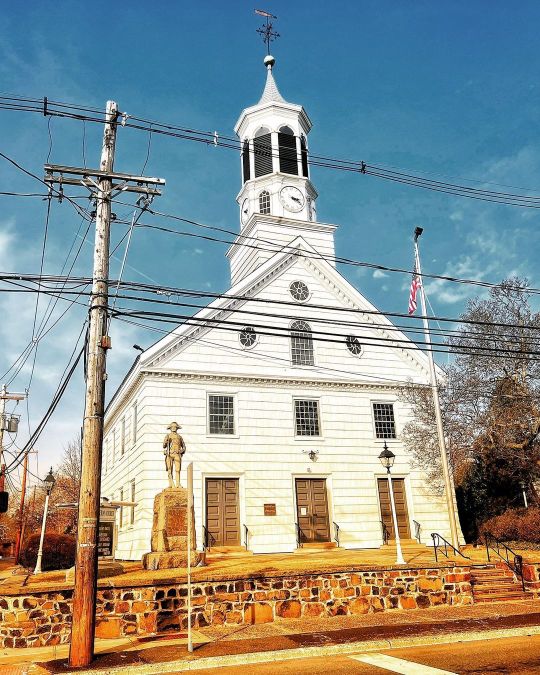
This is First Presbyterian Church of #springfieldnj - #njchurcheverysunday ⛪️ The front lawn statue occupies the smallest state park in #NewJersey, a 5’x5’ parcel deeded to NJ in 1905 for $1. The church grounds includes a small graveyard of Revolutionary War patriots. The statue commemorates the Battle of Springfield in 1780 when James Caldwell threw Watts' Hymnals to soldiers to use as wadding in their guns. The plaque explains: “The Americans under General Greene on that day near the stream west of the church checked the enemy, who in their retreat burned the church [rebuilt in 1791] and village. From this church, Parson Caldwell took psalm books during the fight and flung them to the Americans for wadding, crying: ‘Put Watts into 'em, boys.’” The day I took this photo, I went to a book signing at nearby Halo Roasters - where author Fred T. Rossi told similar history stories from his book, "Jersey Stories." More information about that, and the upcoming book "New Jersey Fan Club," on my blog: https://varettoni.blogspot.com/2022/03/2-new-books-inspired-by-new-jersey.html (at Springfield, New Jersey) https://www.instagram.com/p/CbDXDzBLzn4/?utm_medium=tumblr
3 notes
·
View notes
Photo

The First Presbyterian Church of Springfield in Springfield, #NewJersey. The congregation was established in 1745. A church was built in 1761 or 1762 and stood here at the time of the #RevolutionaryWar, and was used as a storehouse for armaments. During the Battle of Springfield, June 23, 1780, the #church and village was burned by British troops. The present church building dates to 1791. In 1905, the State of New Jersey erected the statue of a Continental Soldier on the front lawn of the church. In 1990,the church was added to the @nationalregisternps. #nj #njhistory #SpreadTheHistory #historygirl #history #travelblog #travelblogger #blogger #blog #history #ushistory #history #americanhistory #explorenj #njspots #jerseycollective #journeythroughjersey #architecture #archi_ologie #oldhouselove #springfield #springfieldnj #unioncountynj #nrhp #presbyterianchurch #battleofspringfield (at Springfield Presbyterian Church) https://www.instagram.com/p/CDppHJ2jfPu/?igshid=capj0dm7ld70
#newjersey#revolutionarywar#church#nj#njhistory#spreadthehistory#historygirl#history#travelblog#travelblogger#blogger#blog#ushistory#americanhistory#explorenj#njspots#jerseycollective#journeythroughjersey#architecture#archi_ologie#oldhouselove#springfield#springfieldnj#unioncountynj#nrhp#presbyterianchurch#battleofspringfield
17 notes
·
View notes
Text

It was 101 years ago today, Saturday morning, May 13, 1922, that grandparents Howell Joshua MacGruder and Mayme Elizabeth Kohn were married in the home of the Rev. Dr. R. H. Hume of the First United Presbyterian Church in Springfield, Ohio. They were married "quietly", according to the newspaper account, but it's hard to imagine Grandma doing anything quietly! They had been married for 34 years when Grandpa Mac had a fatal heart attack at work. Most of the grandchildren were too young (or not yet born!) to have many memories of him, but we all have fond memories of Grandma, who died in 1984. I'd love to know the story of this photograph. Follow this link to view a scan of their marriage license.
0 notes
Photo



Asa S. and Ellen L. Bushnell House
The Richards, Raff & Dunbar Memorial Home
838 E. High St.
Springfield, OH The Asa S. and Ellen L. Bushnell House on E. High St. in Springfield, OH, is a testament to Springfield’s heyday as an industrial center at a time when the state of Ohio played an important role in the country’s industrial growth after the Civil War. If the scale of the house, built by an important industrialist who was later governor of Ohio, demonstrates accumulated wealth, its unified design, rich textures, and contrasting materials illustrates the architectural influence and legacy of Henry Hobson Richardson.
Asa S. Bushnell was a partner in Warder, Bushnell and Glessner, one of the nation’s most successful manufacturers of farm machinery. The company was headquartered in Springfield, which called itself “Champion City” in honor of the company’s famed Champion Reaper. In 1886, Bushnell became the company’s president when founder Benjamin H. Warder retired from day-to-day operations. Company vice president John J. Glessner was already established in Chicago, where he oversaw the firm’s main sales office. Glessner and his wife, Frances, had hired Boston architect Henry Hobson Richardson to design their Prairie Avenue house, and Warder and his wife Ellen were doing the same, having secured Richardson to design what would become their primary residence on K Street in Washington, D.C. Asa and Ellen Bushnell hoped to follow the partners’ lead for their own new house in Springfield. In July 1886, the Bushnells secured what they considered an ideal three-acre lot on a natural ridge on East High Street, then Springfield’s most fashionable address. They were familiar with the land, as it sat directly across the street from where they were currently living, and though they had no design in hand, they nonetheless filed a $100,000 residential building permit that summer.
Unfortunately for the Bushnells, Richardson had died in April of that year and his successor office, Shepley, Rutan and Coolidge, had so many unfinished projects that the firm would accept no new clients until January 1887. Thus the Bushnells turned to Robert H. Robertson, a New York–based architect whom the Glessners had considered for their house in Chicago. Robertson’s earlier commissions for Knox Presbyterian Church and St. James Episcopal Church, both in Manhattan, showed that he was a capable interpreter of Richardson’s signature style. The Bushnells traveled to New York over Thanksgiving 1886 and stayed near Robertson’s East 23rd Street office. In January, they visited the Glessners in Chicago to talk over their plans and to visit several construction sites, including the MacVeagh House and the Glessners’ own home, both by Richardson. Robertson came to Springfield later in the month to survey the Bushnell’s selected site. Although plans were still being developed, the Springfield Republic was confident in reporting that the new house, “will be a stone structure and totally unlike anything else in Springfield.”
By the early spring of 1887, demolition of the previous house on the site was complete and excavation for the new foundations was underway. Joachim Matheson, a young Norwegian architect in Robertson’s office, had moved to Springfield to supervise the construction, which was being carried out by Richardson’s go-to contractors, the Norcross Brothers of Wooster, Massachusetts, who had also completed the Warder and Glessner houses. By the fall, the Springfield Republic noted that the house was “nearly up to the third story.” The house was completed and occupied by autumn of 1888.
As the first example of the Richardsonian Romanesque style in Springfield, the Bushnell House drew considerable attention. During the construction, the Champion City Times commented on what it regarded as an unusual design: “Numerous double windows ornamented above with oddly dressed stone, eye brow windows or better known as roof peeps, red turrets surmounting the outer angles, tall chimneys towering over the roof, quaint piazzas, the porte cochere and the drives around give the new residence a medieval appearance and lend to it a beauty and a grandeur seldom surpassed in modern architecture.” In its overall effect, the house is reminiscent of Richardson’s early attempts to push Romanesque revival forms in a new direction, using stone to create complex exteriors rich in color and texture. For the Bushnell House, Robertson employed two types of stone on the main elevations. The body of the superstructure is composed of a rock-faced blue Ohio River limestone. For the cornice, window surrounds, detailing, and decorative elements, Robertson selected red sandstone from the Norcross quarries in East Longmeadow, Massachusetts. Alternating shades of light and dark sandstone on the many arches recall such Richardson projects as Winn Memorial Public Library (1876–1879) in Woburn, Massachusetts, and some of Robertson’s own previous buildings, including St. James Episcopal Church (1884–1885).
Robertson designed the house in an L-shaped plan. The larger section fronting on East High Street housed the family’s quarters. A large servant wing, designed in a similar style, extends to the rear. Robertson placed the entrance on the east side of the house, accessible through an arched entry or by the attached porte-cochere. A massive oak door in the Richardsonian Romanesque style leads into the foyer. Asa’s private study opens off this foyer, as does the massive central hall, which serves as the house’s organization spine. First-floor family spaces, including the sitting room, parlor, and dining room, are all accessible from the hall. Glass doors open onto a loggia cut into the house’s southwest corner. In the classic Richardsonian fashion, a grand staircase cascades into the main hall, inviting visitors to the second floor. The upper hall provided access to three family bedrooms and two private chambers; it also served as the family’s picture gallery, containing their fine collection of American and European paintings. The servant’s quarters connect to the main house through a door on each floor. On the first floor, this leads to a servant hall that runs the length of the house; Richardson’s Glessner House has a similar arrangement.
Although the site is only three acres, the grounds provide a dramatic setting for the house, which, as the Champion City Times noted, is “advantageously situated on the crest of the ridge running north of High Street.” The property slopes away from the house on three sides into broad lawns with minimal adornment. A limestone wall capped with red sandstone runs the length of East High and Walnut streets, excepting small entrances cut into each, and turns into a retaining wall at the rear. A stone driveway originally snaked through the grounds, entering on High Street and exiting on the side.
Robertson designed two other structures for the property: the carriage house and caretaker’s house complement the design of the main residence, combining elements of the Romanesque Revival and the Shingle Style. Robertson used stone for the first-floor elevations and clad the upper facades in diverse materials. The carriage house is more Shawvian in its exterior treatment, with decorative red tile employed on vertical surfaces and on the complex multi-tier roof. For the gables, Robertson used a combination of red tile, half timbering, and decorative scrollwork, along with strips of multi-paned windows. In the caretaker’s house, Robertson clad the vertical surfaces with three types of wood shingles that are more Richardsonian in their appearance. Although considerably smaller than both the main residence and carriage house, the caretaker’s house combines elements of both for a harmonious effect. It is also more playful, with a circular window, rounded corner, and a large incised carving of the year of construction on the principal elevation.
After Asa Bushnell’s death in 1904 the family sold the property and it remained a private house until the 1930s when Austin Richards purchased it for use as a funeral home. Now known as the Richards, Raff and Dunbar Memorial Home, it is still in operation for funeral services. Architectural tours of the house are available by appointment.
0 notes
Text
Mrs. Lynne M. Walpole, age 68, of Springfield, Tennessee passed away on Sunday, March 13, 2022 at her home. Mrs. Walpole was born August 23, 1953 in Springfield to the late Joe and Martha Morris. She was a graduate of Springfield High School, studied music at Swansea University, and graduated from Austin Peay State University, majoring in Voice and English Literature. She sang in bands and at lots of weddings throughout her college years. During her Junior year at Austin Peay, she began her 49-year marriage with Marshall Dale Walpole. They graduated together and began their life as teachers. Several years later they invested in a Baskin Robbins. Over the course of ten years, they owned and operated two stores, one in Springfield and one in Nashville. Since teaching remained in their blood, Lynn and Dale both returned to teaching. Lynne taught at Jo Byrns High School for 23 years and Dale retired with 29 years in teaching. Lynne was a member of the Springfield First Presbyterian Church where she sang in the choir until her health began to fail. Mrs. Walpole is survived by her husband, Dale Walpole; sons, Matt Walpole and Tyler Walpole; and brothers, David Morris and Mike Morris. A memorial service will be held Wednesday, March 16, 2022 at 6 pm in the chapel of the Austin & Bell Funeral Home in Springfield. Visitation will be held at the funeral home on Wednesday from 4 pm until the hour of service at 6 pm. Austin & Bell Funeral Home in Springfield is in charge of these arrangements. AUSTIN & BELL FUNERAL HOME-509 WALNUT STREET, SPRINGFIELD, TN (615) 384-1000 https://www.austinandbell.com For more obituaries visit https://robertsoncountysource.com/obituaries/
0 notes
Text



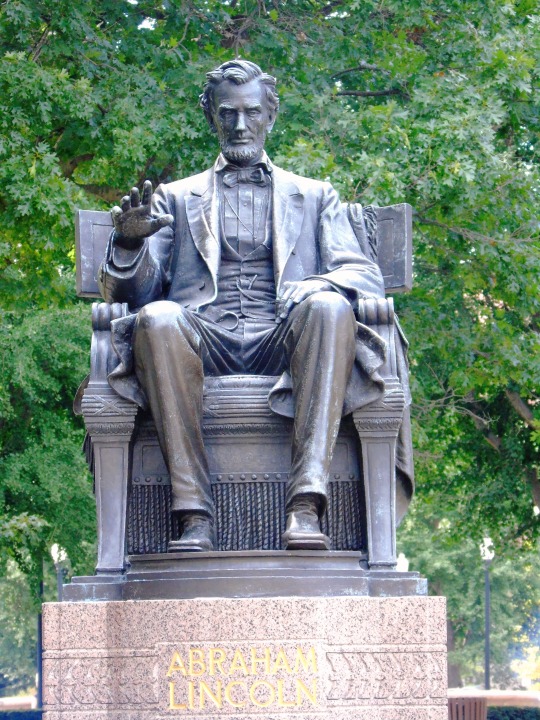

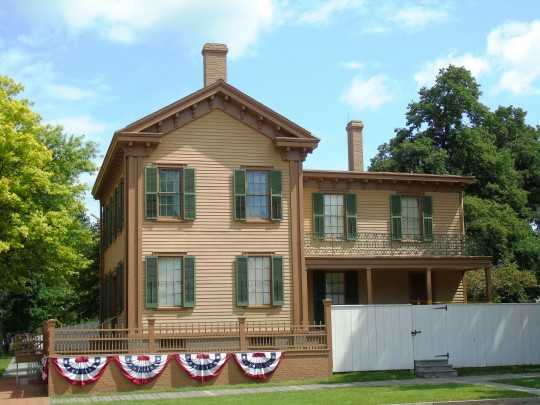
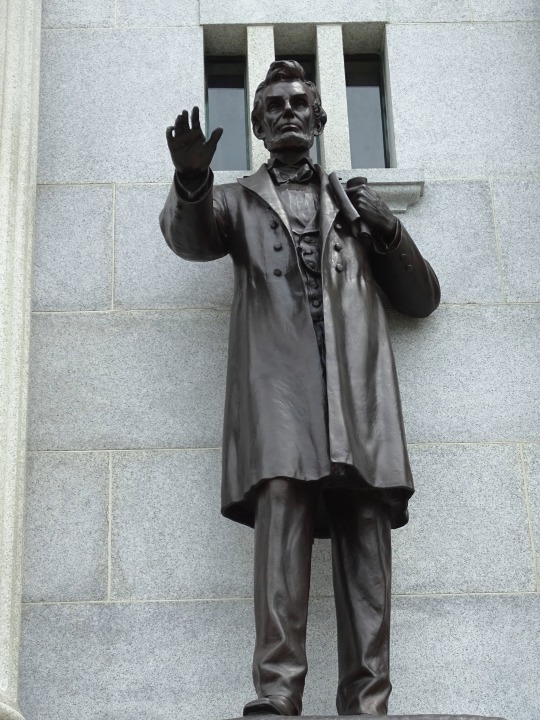
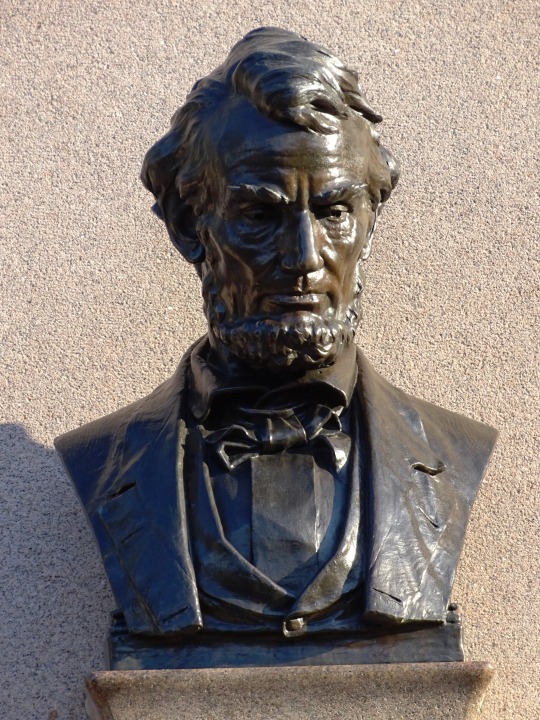
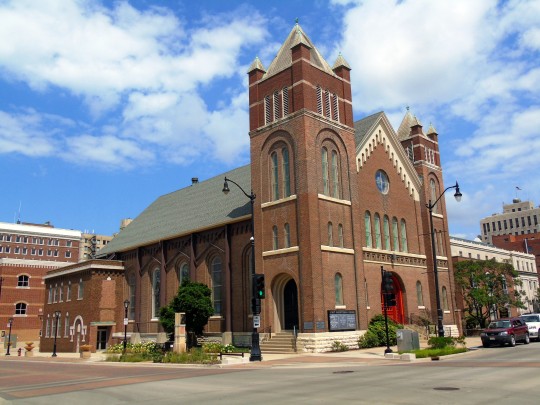
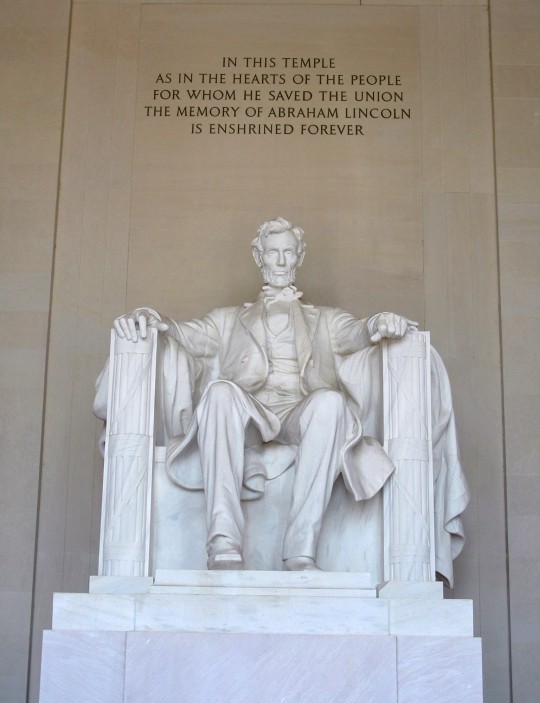
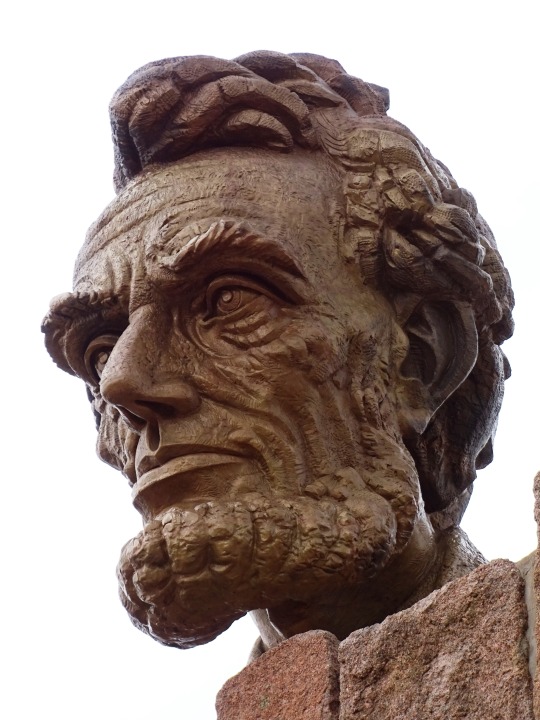
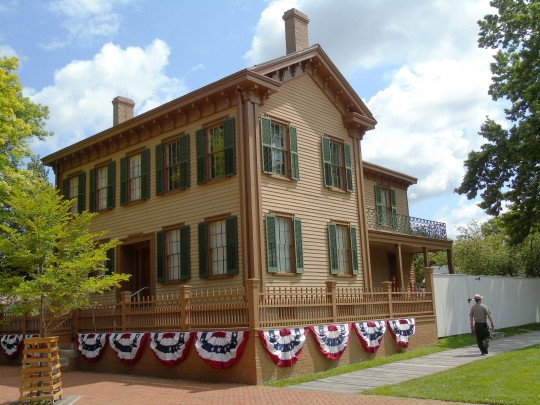



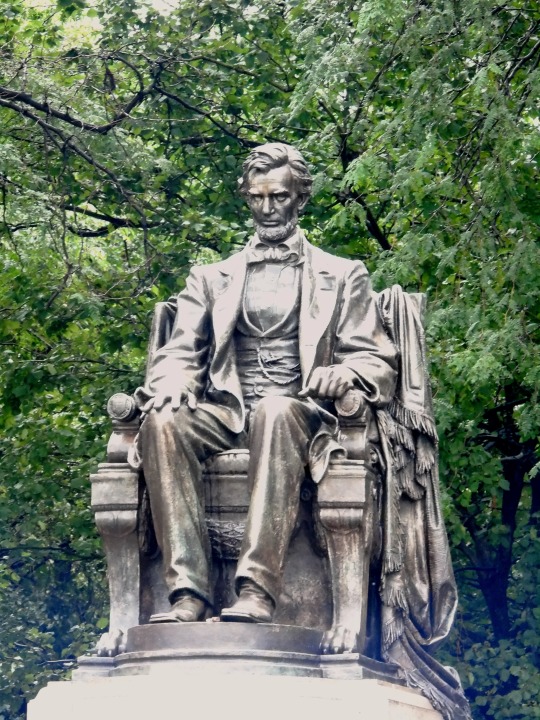
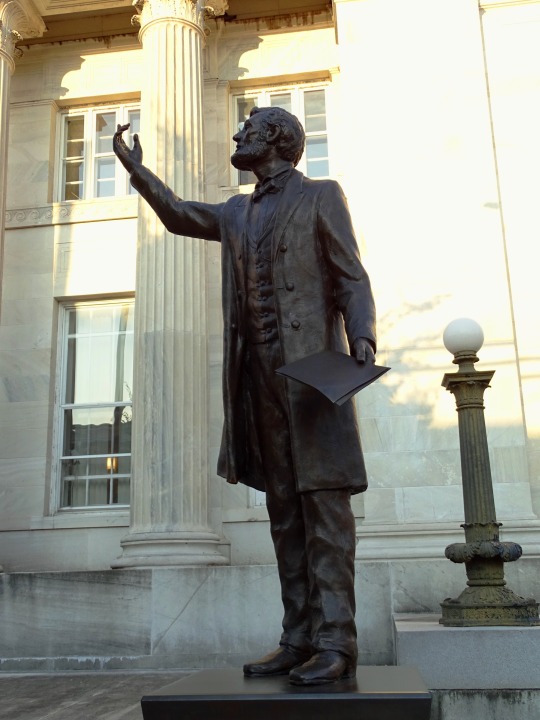



Lincoln's Birthday
Abraham Lincoln, the 16th President of the United States, was born on February 12, 1809. Over the years, he has become known as one of the greatest American presidents of all time. At the time of his death, in 1865, many saw him as a martyr, and it wasn't too long afterward that his birthday began being observed informally. In the mid-1870s, Julius Francis of Buffalo, New York, began honoring Lincoln on his birthday and petitioned Congress to make the day a legal holiday.
But, as of 2019, Lincoln's Birthday is not, nor has it ever been, its own federal holiday. On the state level, a handful of states celebrate Lincoln's birthday on its actual date. In recent years, it has been celebrated as a state holiday in Ohio, Missouri, New York, Illinois, and Connecticut. It is celebrated as such in California as well, but since 2009, it has no longer been a paid holiday there. Some states, Indiana being one example, have officially celebrated Lincoln's birthday, but not on the actual date of his birth. In prior years, more states officially celebrated his birthday; twenty-four states celebrated it in 1940, and ten celebrated it in 1990.
Although Lincoln's Birthday is not celebrated on its own on the federal level, it is often implicitly or explicitly celebrated as part of Washington's Birthday, which is usually called Presidents' Day, taking place on the third Monday in February. In some states, this holiday is known as Washington and Lincoln Day. However, there are other variations of the day; some states specifically celebrate only Washington, and some celebrate Washington and another president, such as Thomas Jefferson.
Besides state observances and informal federal observances, Lincoln's Birthday is celebrated at many places associated with him. Each year, there is a wreath-laying ceremony at the Abraham Lincoln Birthplace National Historical Park in Kentucky. Since its dedication in the early 1920s, there has also been a wreath-laying ceremony at the Lincoln Memorial, which is organized by the Lincoln Birthday National Commemorative Committee and the Military Order of the Loyal Legion of the United States. The reading of the Gettysburg Address is also a part of this event. For his bicentennial, on February 12, 2009, the Abraham Lincoln Bicentennial Commission organized a special event at the Lincoln Memorial. That same day, four new Lincoln pennies were released, with backs that depicted different stages of Lincoln's life. Each year on the day, events are also held at the Abraham Lincoln Presidential Library and Museum in Illinois. The Republican Party holds Lincoln Day dinners around the date because Lincoln was the first Republican president.
Abraham Lincoln was born in a one-room log cabin just south of present-day Hodgenville, Kentucky. When he was two, his family moved to Knob Creek Farm, which is northeast of Hodgenville. In 1816, he moved with his family to Indiana. He did not get much schooling while growing up and often had to work to help support his family, doing things such as farming and splitting rails for fences.
In 1830, his family moved to Macon County, Illinois. He got a job on a boat, hauling freight down the Mississippi River to New Orleans. He then settled in West Salem, Illinois, where he worked as a shopkeeper in a store as well as a postmaster. In 1832, he was a captain in the Black Hawk War and ran for a spot in the Illinois state legislature, which he lost. However, he ran again in 1834 and was successful. As a member of the Whig Party, he was influenced by other Whigs such as Henry Clay and Daniel Webster. Some policy positions he held at the time were in opposition to slavery's spread to the territories, and a goal of expanding the United States with a focus on commerce and cities.
Lincoln decided to teach himself law and passed the bar in 1836. Shortly thereafter, he moved to Springfield, a few years before it became the state's capital. He married Mary Todd in 1842; they had four sons together, although only one would live into adulthood. Lincoln was elected to the U.S. House of Representatives in 1846, but pledging to serve only one term, he returned to Springfield in 1849. His opposition to the Mexican-American War is the most remembered element of his term.
Politics were in Lincoln's blood, and he decided to return to them in 1854. That year, Democrat Stephen Douglas had helped get the Kansas-Nebraska Act passed, which said there should be popular sovereignty when it came to slavery in the territories, meaning that voters should be able to decide for themselves if slavery should be allowed in them. On October 16, 1854, in Peoria, Illinois, Lincoln debated Douglas about the act. During the debate, he spoke against slavery and said it was incongruous with the Declaration of Independence. That same year, he joined the recently formed Republican Party, a party that was created in large part on the belief that slavery should not expand into the territories.
In 1858, Lincoln ran against Stephen Douglas for a U.S. Senate seat in Illinois. In June, he gave his house divided speech, which said the country couldn't go on existing half slave and half free. Lincoln lost the race but gained national recognition, in part because of the debates he had with Douglas.
The Republicans nominated Lincoln as their candidate for president in the 1860 election. It was a four-way race: Stephen Douglas was the nominee of northern Democrats, John C. Breckenridge was the nominee of southern Democrats, and John Bell was the nominee of the Constitutional Union Party. Breckenridge and Bell split the southern votes, and Lincoln won most of the north. He won the electoral vote count, and thus the presidency. By the time he had taken the oath of office in March 1861, seven states had already seceded from the Union; the Civil War began the following month.
The Civil War engulfed Lincoln's presidency, but he proved to be an adept war leader. After George McClellan failed to pursue the Confederate Army after the Union victory at Antietam in September 1862, Lincoln removed him of his position of Commanding General. Lincoln also issued the Emancipation Proclamation after Antietam, which went into effect on January 1, 1863, freeing slaves in the southern states (slaves in the border states loyal to the Union were not freed). The emancipation laid the groundwork for slaves to be freed everywhere—the Thirteenth Amendment went into effect in 1865, after Lincoln's death.
In November 1863, Lincoln delivered the Gettysburg Address at a dedication of the national cemetery at Gettysburg. It became one of the most famous speeches in American history. Although Lincoln has been lauded for fulfilling the commander-in-chief role, he did so not completely without controversy, as he suspended habeas corpus.
In 1864, Lincoln faced the general he had relieved, George McClellan, in his bid for reelection. He prevailed, and at his second inaugural he spoke of the end of the war, and the need for a conciliatory reconstruction "with malice toward none; with charity for all." On April 9, 1865, Confederate commander Robert E. Lee surrendered to Union Commanding General Ulysses S. Grant at Appomattox Court House. Two days later, Lincoln gave a speech on the White House lawn.
On April 14, which happened to be Good Friday, President Lincoln was shot in the back of the head by John Wilkes Booth while at Ford's Theatre. He died early the next morning at a boarding house across from the theatre. Today we remember his remarkable life and his contributions to the United States at such a difficult time in its history.
How to Observe Lincoln's Birthday
The following are some ways to celebrate Lincoln's Birthday:
Visit the Abraham Lincoln Birthplace National Historical Park. This encompasses both his birthplace south of Hodgenville, as well as Knob Creek Farm, where he lived next. A wreath-laying ceremony takes place at the park.
Stop at the Lincoln Museum in downtown Hodgenville as well as the nearby Abraham Lincoln Statue.
Stop at other places along the Kentucky Lincoln Heritage Trail.
Attend the wreath-laying ceremony at the Lincoln Memorial.
Visit the Abraham Lincoln Presidential Library and Museum and The Lincoln Tomb in Springfield, Illinois.
Stop at the Lincoln Boyhood National Memorial in Indiana or at the Abraham Lincoln Library and Museum in Tennessee.
Go to Ford's Theatre.
Read a book about Lincoln.
Read some of Lincoln's own writings and speeches.
Source
#Lincoln's Birthday#Abraham Lincoln#born#12 February 1809#215th anniversary#Lincoln Memorial#Henry Hering#Lincoln Home#Lincoln Home National Historic Site#Seated Lincoln#Augustus Saint Gaudens#First Presbyterian Church of Springfield#Lincoln Family Church#statue#art#Washington DC.#Springfield#Indianapolis#Chicago#USA#photography#history#travel#original photography#vacation#tourist attraction#landmark#cityscape#architecture#US history
1 note
·
View note
Photo

New Post has been published on https://techcrunchapp.com/community-news-from-around-the-area-news-sports-jobs-2/
Community news from around the area | News, Sports, Jobs

East Springfield Center having
fundraiser dinner Thursday
EAST SPRINGFIELD — The East Springfield Community Recreation and Service Center will host a fundraiser dinner from 4 p.m. to 6:30 p.m. on Thursday.
Patrons will be able to get carryout dinners but also enjoy indoor dining with social distancing observed.
The menu will include ham loaf, sweet potatoes, green beans, bread, dessert and drink. The cost is $9.
Patrons can call in orders to (740) 543-3700.
The center is located on county Road 39 next to the East Springfield Volunteer Fire Hall.
‘Unlocking Bible Prophecies’
focus of class starting Saturday
WEIRTON — Seventh-day Adventist Church, 600 Colliers Way, will host “Unlocking Bible Prophecies 2.0” master class with Cami Oetman at 7 p.m. beginning Saturday and continuing through Oct. 17.
Social distancing will apply. It will be live on Facebook and YouTube.
EDGE Sports announces
registration information
STEUBENVILLE — EDGE Sports, a Christ-centered, Tri-State youth basketball league for boys and girls in grades one through six, is preparing for its upcoming 2020-21 season and has announced registration information.
Experienced coaches and chaplains will teach solid basketball fundamentals and core Christian values as part of the program, according to a news release from First Westminster Presbyterian Church in Steubenville. It notes: “The EDGE Sports concept was formed seven years ago when a group of retired coaches were getting together for Bible study. We wanted to reach kids and promote Christian core values and go beyond what they were learning on the court. We have involved the community through sponsorships, schools, coaches, chaplains and the church.”
All coaches and chaplains will participate in BCl background screenings. Each basketball team will practice one or two evenings a week and play one weekly game, usually on Sundays after 1 p.m. All games and practices will be held in Steubenville City School gymnasiums.
Online signup is under way with in-person registration dates to be held Oct. 4 and Oct. 11 from 1 p.m. to 3 p.m. in the Commons at Steubenville High School. After registering, players must attend one of two instructional clinics at Steubenville High School. Clinic dates are:
Oct. 17 — First and second grade, 10 a.m. to 11 a.m.; third and fourth grade, 11 a.m. to noon; and fifth and sixth grade, noon to 1 p.m.
Oct. 25 — First and second grade, 1 p.m. to 2 p.m.; third and fourth grade, 2 p.m. to 3 p.m.; and fifth and grade grade, 3 p.m. to 4 p.m.
All guardians/parents must sign a copy of the Hold Harmless/COVID 19 Liability Waiver before a child can play. Practices will begin in the middle of November. Games begin Dec. 6. Parents and guardians can register online at www.edgesportsov.com/ until Oct. 25. The registration cost of $50 includes three months of basketball instruction and a high quality reversible jersey. Checks can be made payable to EDGE Sports. The webpage is www.edgesportsov.com.
Today’s breaking news and more in your inbox
(function(d, s, id) var js, fjs = d.getElementsByTagName(s)[0]; if (d.getElementById(id)) return; js = d.createElement(s); js.id = id; js.src = "https://connect.facebook.net/en_US/sdk.js#xfbml=1&appId=152048938164494&version=v2.0"; fjs.parentNode.insertBefore(js, fjs); (document, 'script', 'facebook-jssdk'));
0 notes
Photo

Rex Richard Selters, 80, passed away on Monday, November 25, 2019. Visitation will be held at 10:00 a.m., Saturday, November 30, at First Presbyterian Church, 1100 Austin Avenue, Waco. Following the visitation, a celebration of the Resurrection of our Lord will be held at 11:00 a.m., Saturday, at First Presbyterian. A graveside service will follow at Oakwood Cemetery, 5th and LaSalle, Waco, Texas.
Rex was born May 26, 1939, the third son of Beula and George Selters of Macomb, Illinois, where George was superintendent of schools. Rex graduated from Western Illinois High School in Macomb in 1957. He earned a Bachelor of Arts in 1961 and Master of Arts degrees from Bob Jones University, Greenville, South Carolina. He completed a Bachelor of Divinity degree from Columbia Theological Seminary, Decatur, Georgia, in 1962 and a Master of Arts degree in psychology from Columbia University in New York City in 1968. Moving to Waco in 1969, Rex earned his Ph.D. degree in Psychology from Baylor University.
Rex and Anita Lorene Harvey met in college at Bob Jones University and were married December 28, 1961, in Springfield, Ohio. God has blessed them with 58 years of marriage and two wonderful sons, George Alan and Daniel Harvey. George, CFP, currently is vice-president and senior financial advisor with Raymond James in El Paso, Texas. Dan has worked in the aerospace industry at Johnson Space Center, Northrop Grumman in San Diego, and Lockheed Martin in Fort Worth. At Lockheed Martin he was part of the team that created collision avoidance software which was recently awarded the Robert J. Collier trophy placed in the Smithsonian Air and Space Museum.
Rex was a member of the American Psychological Association, the Texas Psychological Association, and Kiwanis International. He was a life sponsor of Ducks Unlimited.
Rex was ordained a Presbyterian minister in Illinois and served as pastor in Aledo, Illinois, and Brooklyn, New York City. He also preached at many churches in Texas and led youth and adult workshops and retreats.
After completing his doctorate, he spent the rest of his career as a psychologist first with MHMR and then in private practice. During this time he taught seven courses in psychology at Baylor University. He called himself a "pinch hitter" for professors who were away from the university. One of the delights of his career was serving as the primary supervisor of 27 doctoral students in psychology. In this position a student spent a year with the supervisor two days per week witnessing the teacher in practice, and then the teacher supervised the student in performing psychological practices. During this time Rex was also appointed as an adjunct professor in Community Psychiatry at the University of Texas Medical Branch at Galveston.
One of the most interesting tasks of his career was working with local police departments. All Texas law enforcement officers must undergo a psychological evaluation to help determine their suitability for the positions. Dr. Selters conducted hundreds of such evaluations in this county. He also taught in the Waco Police Academy such topics as stress management, race relations, and shotgun employment.
Rex was preceded in death by his father, George; his mother, Beula; and his brother, Larry.
He is survived by his wife, Anita; his older brother, Weldon of Glendale, California; his son, George and wife, Sylvia; grandchildren, Linday Selters and husband, Justin Atteberry, Dane Selters, Brianna, Carley, and Carlos Granillo; and his son, Dan.
The family wishes to thank Michael Harvey at pulmonary rehab and Matt Pattillo, M.D., of Waco Lung Associates for their special care and help during Rex's illness. Memorials may be give to the First Presbyterian Church of Waco, Texas, and Providence Hospice Place, 300 Highway 6, Waco, Texas 76712.
#Rex Selters#Bob Jones University#Class of 1961#Obituary#Hall of Fame#BJU Alumni Association#Rex Richard Selters#Psychology
0 notes
Photo

Maker’s name: Jan Lynch
Petition sheet number: 219
Person honouring: Agnes G. Borthwick
Relationship to maker: Great-grandmother
Agnes was the eldest daughter of Annie Jane Fullerton and William McCullough Dorman from County Down in Ireland.
In 1887, at age 18, Agnes married her school master, James Bibb Borthwick, born in Glasgow, Scotland. The couple moved about Canterbury teaching.
Agnes was a strong woman and brought up my mother, Nancy, and her two siblings for several years after the accidental death of their father. Their mother was training as a Plunket nurse under Truby King.
She excelled at croquet and bridge and supported James in his educational pursuits. Agnes was an accomplished needlewoman and a parishioner of Knox Presbyterian Church in Christchurch.
Agnes signed the suffrage petition in Kaikoura and also enrolled to vote there in 1893 and 1896. She and James then moved to Kaiapoi and Ashburton before retiring to Christchurch.
Agnes was 88 when she died in 1957; James had died in 1938 (74 years). Both were buried at Bromley cemetery.
Descendants of Agnes and James now number about 100 – significant surnames: Menzies (from Hadecke), Fogarty, Lynch, Jones, Curtis. They have been born in: New Zealand, USA, Ecuador, UK, and France; they worked as: teachers, doctors, surgeons, diplomats, university graduates, nurses, physiotherapists, engineers, painters, occupational therapists, bankers, public servants, artists, set designers, architects, local politicians, soldiers.
Note: There were two Agnes Dormans. The first was my great-grandmother who grew up in Springfield; on marriage she moved to Kaikoura as Agnes G. Borthwick and signed the petition on sheet 219.
The second Agnes married William Dorman, my great-great-uncle and brother of the first Agnes; she went to Springfield to live, and signed on sheet 188. They later developed the Happy Valley farm on Wellington’s south coast.
I knew and loved my great-grandmother for 18 years.
Panel materials: Felt and paper mache made by my daughter Karen (Kate) found in her sewing box after her death in 2015. Karen was the first double transplant of kidney and pancreas from NZ at Westmead Hospital, Sydney. She survived 22 years, earned a MA with distinction, married David Filer and was a highly regarded public servant. Family photos printed on fabric. Top, Agnes Borthwick, Florence Menzies, Nancy Fogarty, and child, Janice Fogarty, myself. 4 generations. Middle, Anthony, Gregory, Terence Lynch. Jan, Brian, Karen, Jacqui Lynch. 4th and 5th generation. Bottom, Olivia, Izaak, Michaela Lynch, Nancy Fogarty, Hanna Lynch, Maxwell Lynch. 6th and 3rd generation. Only cost was to print the photos.
Unique ID number: VRS.2019.133
#textile#women#new zealand#fiberart#textileart#embroidery#womens rights#sewing#community project#handembroidery#handiwork#textile artists#Vinnies Resew#svdp#St Vincent de Paul#Re Sew#Vinnies#suffrage125
0 notes
Text
Springfield, Illinois, In Search of Abraham Lincoln, Part 3
Springfield, Illinois, In Search of Abraham Lincoln, Part 3
1880’s Italianate building at the former site of the American House Hotel at 6th and Adams, Springfield, Illinois, renovated and restored by its current occupants, Delano Law Offices
Springfield, Illinois, Saturday, July 29th, 2017, continued
After my visit to the Old State House, I notice one of those Looking for Lincoln historical placards on a building to my left as I walk towards my next…
View On WordPress
#Abraham Lincoln#American House Hotel#Battle of Stillman&039;s Run#Black Hawk War#Border States#Civil War#Elijah Iles#First Presbyterian Church#Freethought#Gettysburg Address#Globe Tavern#Lincoln and Religion#Lincoln&039;s Religious Belief#Lincoln-Herndon Law Office#Louisville Kentucky#Mary Tood Lincoln#Myers Building#Springfield#Tinsley Building#William Herndon
0 notes
Photo

First Presbyterian Church, South 7th Street, Springfield
1 note
·
View note